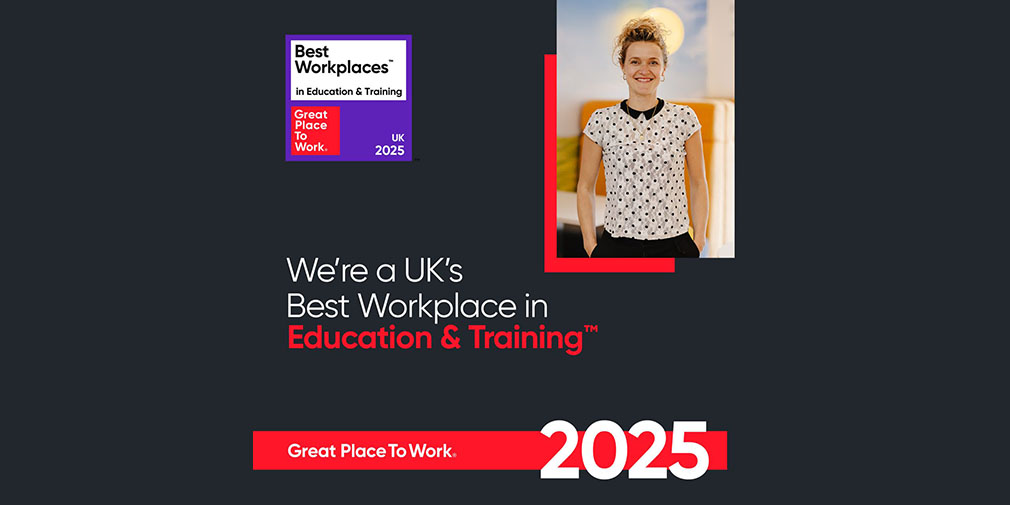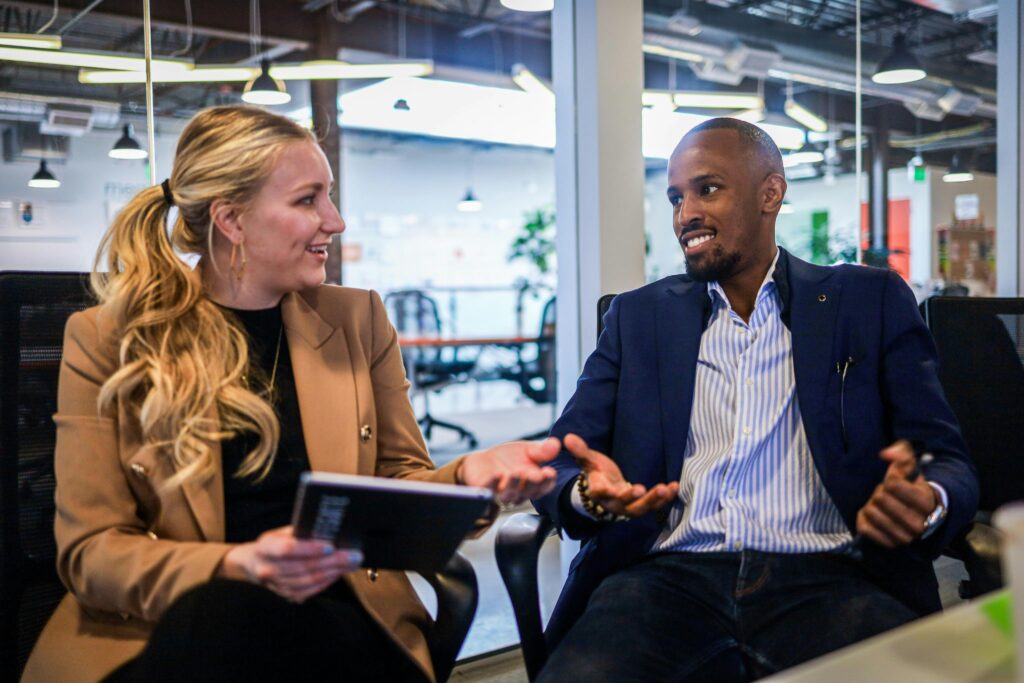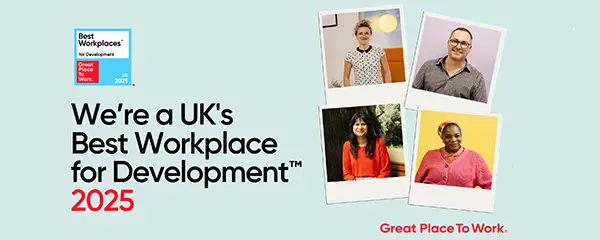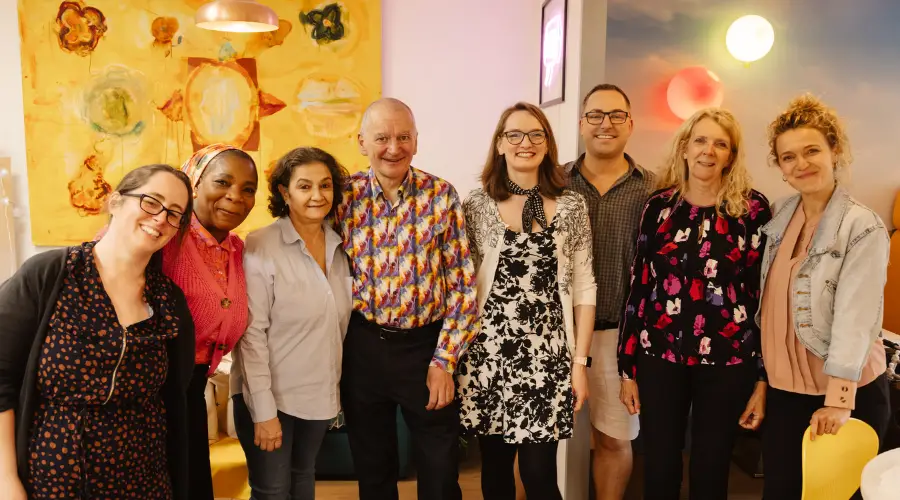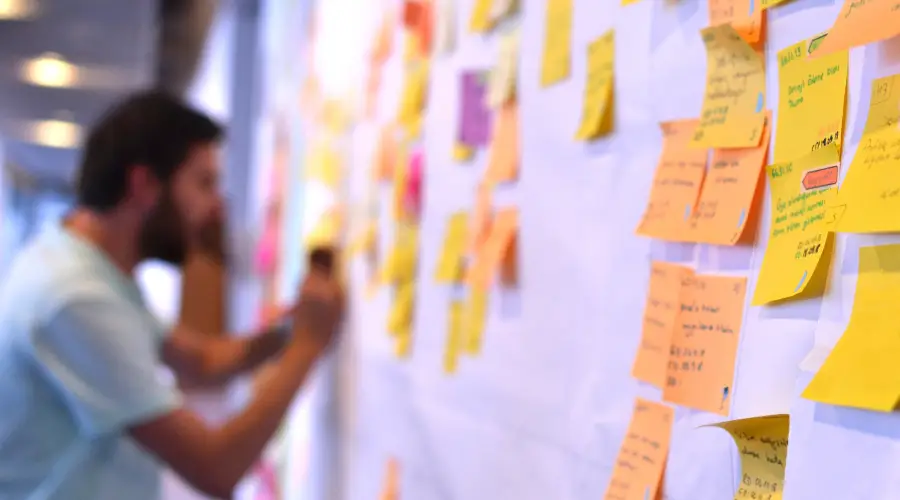The average working adult spends about 90,000 hours of their lives doing their jobs. They don’t just shape their career during that time, but also maintain their relationships and well-being. When work starts to harm health, you can see burnout, low productivity, and more missed days. However, when work supports health, the benefits extend far beyond just the office.
The World Economic Forum and the McKinsey Health Institute published a report that focuses on this message by explaining how improving workforce well-being could create between $3.7 trillion and $11.7 trillion in global value, or roughly 17% to 55% of average annual pay.
Now, this isn’t regarding employee perks or company missions. It’s about designing an office where people can be engaged and productive long-term.
These numbers are estimated from fewer people leaving jobs, fewer missed days, and better productivity at work, but the largest share comes from reducing presenteeism. This is the act of working but not at your best capabilities due to stress, illness, or other health issues.
Preventing presenteeism actually creates more value than cutting absenteeism and represents 54% to 77% of the total opportunity. There is also a macro effect. Healthier workforces could lift global GDP by 4% to 12%. High and middle-income economies each contribute about half of that total, and the number of workers who benefit is 2.5 billion in middle-income countries and 636 million in high-income economies.
Who is most at risk?
In a global survey of more than 30,000 employees across 30 countries, only 57% reported good overall health across mental, physical, social, and spiritual dimensions. Around 22% reported burnout symptoms. It also looks different depending on the industry. Human resources, education, and construction reported higher well-being. Accounting, retail, and media reported lower well-being and more burnout.
The gaps across groups are statistically consistent. Women reported more exhaustion than men, even when overall health scores were close. Employees a part of the LGBTQI+ community reported lower well-being than those who aren’t. Neurodivergent employees reported much lower scores than neurotypical employees.
Younger workers between the ages of 18 and 28 reported burnout at about three times the rate of workers of 60. Employees with unstable finances reported far worse outcomes than those who felt financially secure. Caregivers stated higher well-being on social and purpose measures, but also much higher burnout driven by exhaustion.
All of these cases are common profiles found in most companies and workplaces. When leading a team, you need to plan for these differences. One policy will not benefit everyone. Creating targeted fixes that match people’s needs is what will effectively improve productivity.
What effective programmes look like
Several companies in the report show how this can work. Novo Nordisk runs a global stress and mental health survey with validated questions. In 2023, about 14% of its 64,000 employees reported stress symptoms. Managers of high-stress teams receive support from organisational psychologists and targeted tools. Stronger interventions typically reduce the share of reported stress by 20% to 30% within one to two years.
On, a sportswear company, offered a programme with coaching sessions, a self-care library, and workshops. Roughly half of the employees enrolled. The company reports an annual return of 11.6 times the programme’s cost, or about $2.9 million a year. $1.3 million is from productivity gains from a 5% improvement in presenteeism-related loss, $1.1 million is from a 30% drop in voluntary attrition, and $500,000 is from reduced HR case-handling time.
Swiss Re launched a metabolic health pilot in the United Kingdom. Employees completed a risk survey and received plans on nutrition, sleep, movement, and stress. 40 people received one-on-one planning, and five completed a seven-day residential programme with a year of virtual follow-up.
These examples share the same pattern: use data to target action. They address both individual support and the structure of work. They track a handful of outcomes leaders already watch and stick with the programme long enough to see results instead of hopping between trends.
How to get started in your organisation
The report gives six simple steps to build your plan.
😊 First, measure your starting point so you know what to fix and where the value sits. Track productivity with simple outcomes like tasks completed on time, sales per person, or service quality. Track absenteeism as days missed due to illness. Estimate presenteeism using short self-reports on how many health issues limited work that day. Track retention by looking at unwanted turnover and average tenure. Track attraction by watching application per opening and offer acceptance rates.
😊 Second, choose a few initiatives that match your risks and strategy, not just a generic template.
😊 Third, pilot these initiatives with a defined group and a clear time frame. Then, decide to scale, adjust, or stop.
😊 Fourth, track three to five metrics that connect health to outputs and share results with managers and employees.
😊 Fifth, make senior leaders accountable by tying outcomes to goals and reviews.
😊 Lastly, embed health into how you run the organisation. This includes job design, scheduling, performance management, and leadership training.
If you manage people, you can make work healthier with small moves. Hold shorter, focused meetings and protect blocks for deep work. Set clear priorities and stop low-value tasks. Give teams more control over how they sequence work. Review roles to remove ambiguity. Check in on the workload, not just the results.
When you see warning signs from employees, ask what is getting in the way of good work and try to remove it. If you are an employee, ask for what you need to do your job well. That might include clearer priorities, shift swaps, referral to counselling, or even just a better chair. Explain how the change will improve your focus, quality, or reliability. Managers are more likely to say yes when the request is linked to an outcome.
Japan’s Stress Check Programme requires workplaces with more than 50 employees to offer an annual stress survey and provide physician consultations for high-stress workers. Chile introduced a mandatory workplace environment and mental health evaluation in 2024.
The EU expects employers to assess and prevent psychosocial risks as part of safety. OSHA raised U.S. penalties for health and safety violations to $15,624 per violation in 2023. Policy is moving in the same direction all over the world. Acting now will reduce compliance risk and avoid rushed fixes later.
Final thought
The case for action is straightforward. Healthier employees get more done, stay longer, and need less crisis management. Healthier teams adapt faster when roles or tools change. Healthier organisations avoid fines and reputational damage. Work will always involve pressure and deadlines.
The goal isn’t to completely remove all stress. It’s to remove unnecessary stress and support recovery so people can sustain their performance. No one had a perfect plan to begin with. After starting with a baseline and one targeted fix, prove it with data and keep going. Over time, these efforts will result in fewer sick days, steadier teams, better customer outcomes, and cleaner financials.
Healthy employees lead to healthy organisations. Build your decisions around that idea, and you will make better calls about policies and leadership.
Reference:
World Economic Forum. (2025, January). Thriving workplaces: How employers can improve
productivity and change lives (in collaboration with McKinsey Health Institute). World Economic Forum. https://www.mckinsey.com/mhi/our-insights/thriving-workplaces-how-employers-can-improve-productivity-and-change-lives


